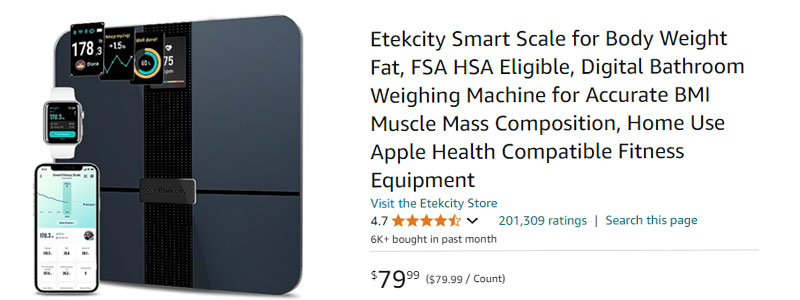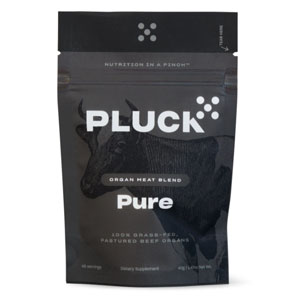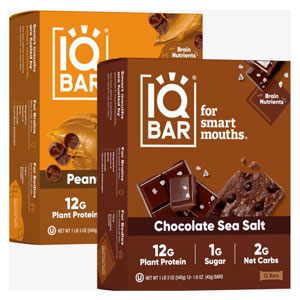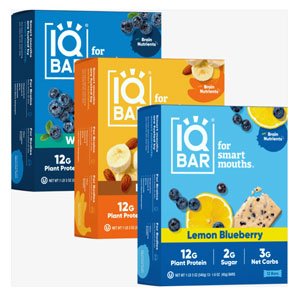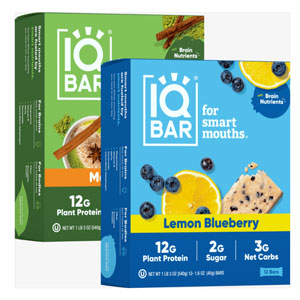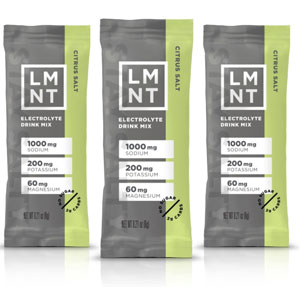Table of Contents
Finding your path through the weight loss maze doesn’t have to feel like solving a Rubik’s cube blindfolded. This guide cuts through the noise to bring you what actually works.
Let’s be honest—weight loss isn’t just about looking good in those jeans you’ve been eyeing. It’s about feeling energized when you wake up, conquering those stairs without gasping for air, and giving your future self the gift of health. I’ve been down the rabbit hole of fad diets and miracle workouts, and I’m here to tell you what I wish someone had told me years ago.
Whether you’re just starting out or hitting reset after a break, this comprehensive guide will walk you through the most effective diets, workouts that don’t make you dread exercise, apps that actually help, and tips that fit into real life—not some fantasy world where you have unlimited time and willpower.
Ready to find what works for your body and lifestyle? Let’s go!
Top Weight Loss Diets in 2025
The perfect diet doesn’t exist—but the perfect diet for you just might. Let’s explore options that have stood the test of time and science.
Mediterranean Diet: More Than Just Olive Oil
I remember thinking the Mediterranean diet was just an excuse to eat pasta and drink wine. Boy, was I wrong. This approach focuses on fresh vegetables, fruits, whole grains, lean proteins (especially fish), and yes, healthy fats like olive oil.
What makes it work? It’s sustainable. You’re not counting every calorie or eliminating entire food groups. You’re eating real, delicious food that happens to be good for weight management.
Research published in the New England Journal of Medicine shows that Mediterranean diet adherents lost more weight and kept it off compared to those on low-fat diets.
Intermittent Fasting: Timing Is Everything
“You mean I just… don’t eat?” That was my first reaction to intermittent fasting. But this approach isn’t about starving—it’s about timing your meals wisely.
Whether you choose the 16:8 method (eating within an 8-hour window), the 5:2 approach (reducing calories two days per week), or alternate-day fasting, the principle remains the same: giving your body breaks from constant digestion helps regulate insulin levels and may promote fat burning.
A 2023 study in Cell Metabolism found that intermittent fasting produced similar weight loss results to traditional calorie restriction but with added metabolic benefits.
Plant-Based Diet: Not Just For Tree Huggers
Plant-based eating doesn’t mean you have to become a strict vegan overnight. It’s about making plants the star of your plate rather than the supporting cast.
The fiber content in plant foods helps you feel full longer, while naturally reducing your caloric intake. Plus, the diverse nutrients support overall health beyond just weight management.
According to research in the Journal of the Academy of Nutrition and Dietetics, plant-based dieters typically consume fewer calories and lose more weight than omnivores, even without explicit calorie counting.
Low-Carb/Keto Approach: Fat Burning on Overdrive
When my friend Mark dropped 30 pounds in three months on keto, I was skeptical. But the science behind low-carb approaches is compelling for certain individuals.
By drastically reducing carbohydrates (typically to under 50g daily), your body enters ketosis—burning fat for fuel instead of glucose. This can lead to relatively rapid weight loss, especially initially.
Is it sustainable long-term? That depends on the person. Some thrive on bacon and avocados forever; others find it too restrictive after a while. A Journal of the American Medical Association study found low-carb diets effective for weight loss but noted adherence challenges beyond 12 months.
Diet Comparison Table
| Diet | Weight Loss Speed | Sustainability | Food Flexibility | Cost | Best For |
|---|---|---|---|---|---|
| Mediterranean | Moderate | High | High | Moderate | Long-term health, people who enjoy cooking |
| Intermittent Fasting | Moderate to Fast | Moderate | Moderate | Low | Busy people, those who dislike breakfast |
| Plant-Based | Moderate | Moderate to High | Moderate | Low to Moderate | Environmental concerns, heart health |
| Low-Carb/Keto | Fast initially | Low to Moderate | Low | Moderate to High | Quick results, carb addicts |

Effective Workout Routines for Weight Loss
I used to think spending hours on an elliptical was the only way to lose weight through exercise. If you’re nodding along, I have good news: there are more effective (and less mind-numbing) ways to burn calories.
HIIT: Maximum Results, Minimum Time
High-Intensity Interval Training sounds scarier than it is. The concept is simple: short bursts of intense activity followed by brief recovery periods. Think 30 seconds of all-out effort, then 30 seconds of catching your breath, repeated for 15-20 minutes.
Why does it work so well? HIIT creates something called the “afterburn effect” (officially known as excess post-exercise oxygen consumption or EPOC), where your body continues burning calories hours after you’ve finished working out.
A study in the Journal of Sports Medicine and Physical Fitness found that HIIT participants lost 28.5% more fat than those doing steady-state cardio.
Sample HIIT routine:
- 30 seconds of burpees
- 30 seconds of rest
- 30 seconds of mountain climbers
- 30 seconds of rest
- 30 seconds of jumping jacks
- 30 seconds of rest
- Repeat 4-6 times
Strength Training: The Metabolic Game-Changer
“But won’t lifting weights make me bulky?” I hear this concern all the time, especially from women. The truth? Building muscle through strength training is one of the best things you can do for lasting weight management.
Muscle tissue burns more calories at rest than fat tissue does. By increasing your lean muscle mass, you’re essentially turning your body into a more efficient calorie-burning machine—even when you’re just watching Netflix.
Research published in the International Journal of Sports Nutrition and Exercise Metabolism found that regular strength training increased resting metabolic rate by up to 7%, which translates to burning an extra 100+ calories daily for many people.
Cardio Options: Finding Your Joy in Movement
Let’s face it: if you hate running, you’re not going to stick with running. The best cardio for weight loss is the one you’ll actually do consistently.
Whether it’s swimming, cycling, brisk walking, dancing(!), or kickboxing, aim for at least 150 minutes of moderate-intensity activity weekly. The key is elevating your heart rate while still being able to hold a conversation (though perhaps a bit breathlessly).
A Harvard Health study found that a 155-pound person burns approximately 300 calories in 30 minutes of moderate cycling—and considerably more if they push the intensity.
Mind-Body Exercises: The Underestimated Weight Loss Allies
Yoga and Pilates might not burn calories like sprinting, but don’t count them out of your weight loss arsenal. These practices build core strength, improve posture (instantly making you look slimmer), and—perhaps most importantly—reduce stress.
Why does stress matter for weight loss? When we’re chronically stressed, our bodies produce more cortisol, which can increase appetite and drive fat storage, particularly around the midsection. A Preventive Medicine study found that regular yoga practitioners had lower BMIs and less weight gain over a 10-year period compared to non-practitioners.
Weekly Workout Plan Suggestion
| Day | Morning | Evening | Duration |
|---|---|---|---|
| Monday | Strength (Lower Body) | Light Walk | 30-45 min / 20 min |
| Tuesday | HIIT | Gentle Yoga | 20 min / 15 min |
| Wednesday | Rest or Light Activity | – | As needed |
| Thursday | Strength (Upper Body) | Light Walk | 30-45 min / 20 min |
| Friday | Cardio of Choice | – | 30-45 min |
| Saturday | Full Body Strength or Class | – | 45-60 min |
| Sunday | Active Recovery (Walking, Yoga) | – | 30-45 min |

Best Weight Loss Apps Worth Downloading
We carry powerful weight loss tools in our pockets every day. Let’s explore apps that actually deliver results rather than just taking up phone space.
Tracking Apps: Knowledge Is Power
“I eat pretty healthy,” I told my nutritionist years ago. Then she had me log everything I ate for a week. Eye-opening doesn’t begin to describe the experience.
Apps like MyFitnessPal and Lose It! make calorie and nutrient tracking surprisingly simple. With barcode scanning, restaurant databases, and customizable goals, these apps remove the guesswork from portion control and calorie management.
A Kaiser Permanente study found that participants who tracked their food consistently lost nearly twice as much weight as those who didn’t.
Workout Apps: Your Pocket Personal Trainer
Remember when home workouts meant dusty VHS tapes or repetitive DVD menus? Today’s fitness apps deliver personalized, progressive training experiences that adapt to your level.
Nike Training Club offers free, high-quality workouts ranging from 15-45 minutes across various fitness styles. Peloton’s app (which doesn’t require their expensive bike) delivers energizing instructor-led classes. FitOn provides celebrity-led workouts that make you forget you’re exercising in your living room.
According to a Journal of Medical Internet Research study, fitness app users were significantly more active and had lower BMIs than non-users.
Mindfulness/Habit Apps: Addressing the Psychology of Weight Loss
Physical changes start with mental shifts. Apps like Noom combine food logging with psychological insights to help you understand your relationship with food. Others like Headspace and Calm focus on stress reduction through meditation, which can reduce emotional and stress eating.
A 2022 analysis in Frontiers in Psychology found that mindfulness interventions led to greater weight loss success and maintenance compared to standard approaches alone.
App Comparison Table
| App | Primary Function | Free Version | Premium Cost | Unique Feature |
|---|---|---|---|---|
| MyFitnessPal | Food & Exercise Tracking | Yes, limited | $9.99/month | Largest food database |
| Lose It! | Calorie Tracking | Yes | $7.99/month | Snap It photo food recognition |
| Nike Training Club | Workout Library | Completely free | N/A | Adaptive training plans |
| Peloton | Guided Workouts | Free trial | $12.99/month | Live and on-demand classes |
| Noom | Psychology-Based Coaching | Free trial | $59/month | Cognitive behavioral approach |
| Headspace | Meditation & Mindfulness | Limited free | $12.99/month | Specific stress-eating programs |
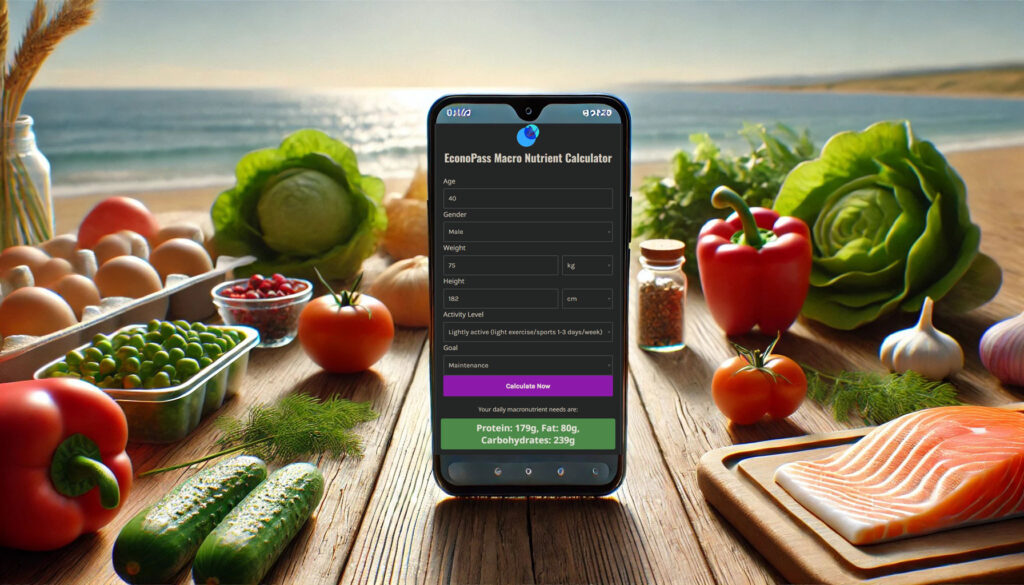
Practical Weight Loss Tips That Actually Work
Let’s get real: knowing what to do isn’t the hard part of weight loss—it’s actually doing it consistently. These practical tips focus on sustainability and effectiveness.
Sustainable Habit Formation: The 1% Approach
Instead of overhauling your entire life on Monday, focus on improving by just 1% each day. Want to eat more vegetables? Start by adding one serving daily, not replacing every carb with kale overnight.
James Clear, author of Atomic Habits, explains that tiny changes compound dramatically over time. Small, consistent actions build powerful momentum and are less likely to trigger the psychological resistance that comes with dramatic changes.
Try this: Choose one small health habit each week. Master it before adding another. By year’s end, you’ll have transformed your lifestyle without the burnout of crash dieting.
Nutrition Hacks: Working Smarter, Not Harder
Ever notice how the healthiest options are rarely the most convenient? These practical hacks level the playing field:
- Prep in batches: Spend 1-2 hours on Sunday preparing proteins and chopping vegetables for the week.
- The plate method: Fill half your plate with non-starchy vegetables, one quarter with lean protein, and one quarter with complex carbs.
- Strategic grocery shopping: Shop the perimeter of the store first (where fresh foods live) before venturing into processed-food aisles.
- Water first: Drink a full glass of water before each meal to improve digestion and reduce overeating.
Research from the American Journal of Clinical Nutrition shows that simple environmental changes like using smaller plates can reduce calorie consumption by 15-20% without feeling deprived.
Common Pitfalls to Avoid: Learning from Collective Mistakes
I’ve made every weight loss mistake in the book—so you don’t have to. Watch out for these common traps:
- All-or-nothing thinking: One cookie doesn’t ruin your diet; just as one salad doesn’t make you healthy. Consistency matters more than perfection.
- Liquid calories: That morning caramel macchiato could contain more calories than breakfast.
- “Health halo” foods: Gluten-free cookies and organic candy are still treats, not health foods.
- Scale obsession: Weight fluctuates daily due to water, hormones, and digestion. Focus on bi-weekly trends, not daily numbers.
A Cornell Food and Brand Lab study found that people who weighed themselves daily lost more weight initially but were more likely to abandon their efforts compared to those who monitored weekly trends.
Mental Health Considerations: The Missing Piece
Weight loss discussions often overlook the crucial mental and emotional aspects of the journey. Consider:
- Sleep quality: Research in the Annals of Internal Medicine found that insufficient sleep can reduce fat loss by up to 55% even with perfect diet adherence.
- Stress management: High cortisol levels from chronic stress promote fat storage and increase cravings.
- Social support: People with strong support systems lose more weight and maintain losses better than those going it alone.
- Self-compassion: Those who practice self-forgiveness after setbacks are 70% more likely to return to healthy habits compared to those who self-criticize, according to Journal of Social and Clinical Psychology research.

Putting It All Together: Creating Your Custom Plan
With so many options, how do you create a weight loss approach that works specifically for you? Let’s build your personalized roadmap.
How to Choose the Right Diet
The best diet is the one you can actually stick with. Consider:
- Your food preferences: Do you love cooking? Hate math? Can’t give up certain foods? Choose accordingly.
- Your schedule: Busy professionals might prefer intermittent fasting or meal prep-friendly plans.
- Health conditions: Certain medical issues may make some diets more suitable than others.
- Past experiences: What worked before might work again—or might need tweaking.
Try this approach: Pick one diet that seems most aligned with your preferences. Commit to it fully for three weeks before evaluating. If it’s not working, identify specifically why before switching.
Matching Workouts to Your Lifestyle
Not everyone is meant to be a 5 AM gym-goer. Honest assessment leads to better adherence:
- Morning person or night owl? Schedule workouts when you naturally have more energy.
- Enjoy socializing or solo time? Group classes versus solo training.
- Limited time? HIIT and circuit training give maximum results in minimum time.
- Joint issues or injuries? Low-impact options like swimming or recumbent cycling.
Remember: the “perfect” workout routine you do inconsistently will never outperform the “good enough” routine you do regularly.
Using Apps Effectively
App overload is real. Instead of downloading everything, strategically choose 2-3 that complement each other:
- One for nutrition tracking
- One for workouts/activity
- Optionally, one for mindfulness/habit building
Set aside specific times to log your information (after meals, right after workouts) to establish consistency. Use the notifications strategically—too many will lead to ignoring them all.
Setting Realistic Goals
The difference between abandoning ship by February and creating lasting change often comes down to how you set goals:
- Process over outcome: “I’ll walk 30 minutes daily” versus “I’ll lose 30 pounds.”
- Specific and measurable: “I’ll eat 3 servings of vegetables daily” versus “I’ll eat healthier.”
- Timeline flexibility: Bodies aren’t machines; progress isn’t always linear.
- Non-scale victories: Energy levels, clothing fit, and improved mood matter as much as numbers.
According to American Psychological Association research, people who set behavior-based goals versus weight-based goals maintain motivation longer and experience less psychological distress during plateaus.
Keep a Journal
Another useful tip for weight loss is to keep a journal. A journal can help you lose weight by helping you record your food intake, exercise, weight, and other metrics, and analyze your patterns, behaviors, and emotions. A journal can also help you express your thoughts and feelings, cope with stress, and celebrate your achievements. For example, a journal for weight loss can include:
- A food diary, where you write down everything you eat and drink, and how much,
- and globally how you feel, like before and after eating.
- An exercise log, where you write down what type of exercise you do, how long, how hard, and how you feel before and after exercising.
- A weight tracker, where you write down your weight, body fat percentage, and other measurements, and how they change over time.
- A mood diary, where you write down your thoughts and emotions, and how they affect your eating and exercise habits.
- A gratitude journal, where you write down what you are grateful for, and how they make you happy and fulfilled.
The Bottom Line: Your Sustainable Path Forward
Weight loss doesn’t have to mean misery, deprivation, or spending hours counting almonds. The approaches that stand the test of time share key characteristics: they’re sustainable, they fit your lifestyle, and they address both the physical and psychological aspects of weight management.
Remember that your body is remarkably adaptable. It wants to be healthy. By making consistent, reasonable changes rather than seeking overnight transformations, you give yourself the gift of lasting results rather than the familiar cycle of dramatic loss and regain.
The question isn’t “How quickly can I lose weight?” but rather “What healthy habits can I maintain for life?” Answer that question honestly, and you’ve already taken the most important step on your journey.
Ready to get started? Choose one small action from this guide to implement today. Just one. Then come back tomorrow and add another. Your future self will thank you.
Frequently Asked Questions
How much weight can I realistically lose in a month?
Healthy, sustainable weight loss typically ranges from 1-2 pounds per week, or 4-8 pounds monthly. Faster initial loss is common due to water weight, but the 1-2 pound weekly rate tends to be most sustainable and least likely to be regained.
Do I have to give up carbs completely to lose weight?
Absolutely not. While low-carb approaches work for some people, many successfully lose weight while including high-quality carbohydrates like fruits, vegetables, legumes, and whole grains. The key is portion control and choosing complex carbs over refined ones.
What’s more important for weight loss—diet or exercise?
Both matter, but not equally. Research consistently shows that dietary changes drive the majority of weight loss (roughly 80%), while exercise supports those changes and offers countless health benefits beyond weight management. The most successful approach combines both.
How do I break through a weight loss plateau?
Plateaus are normal and expected. When progress stalls, first reassess your calorie intake (we tend to underestimate portions over time) and evaluate your exercise intensity (bodies adapt to consistent routines). Sometimes, paradoxically, eating slightly more or taking a recovery week can restart progress.
Will drinking apple cider vinegar/lemon water/detox tea speed up my weight loss?
Despite popular claims, none of these substances significantly impact weight loss. While some studies show minimal effects from apple cider vinegar, the results aren’t dramatic enough to make it a weight loss game-changer. Focus on sustainable nutrition and exercise changes instead.
How do I stop emotional eating?
Emotional eating responds best to a three-pronged approach: identifying triggers (using food journals), developing alternative coping mechanisms (like brief walks, breathing exercises, or calling a friend), and practicing mindfulness during meals. Apps like Headspace offer specific programs for emotional eating.
Is it better to work out in the morning or evening for weight loss?
The science shows minimal difference in effectiveness between morning and evening workouts. The best time to exercise is whenever you’ll do it consistently. That said, morning exercisers tend to have slightly better adherence rates, possibly because fewer schedule conflicts arise early in the day.








